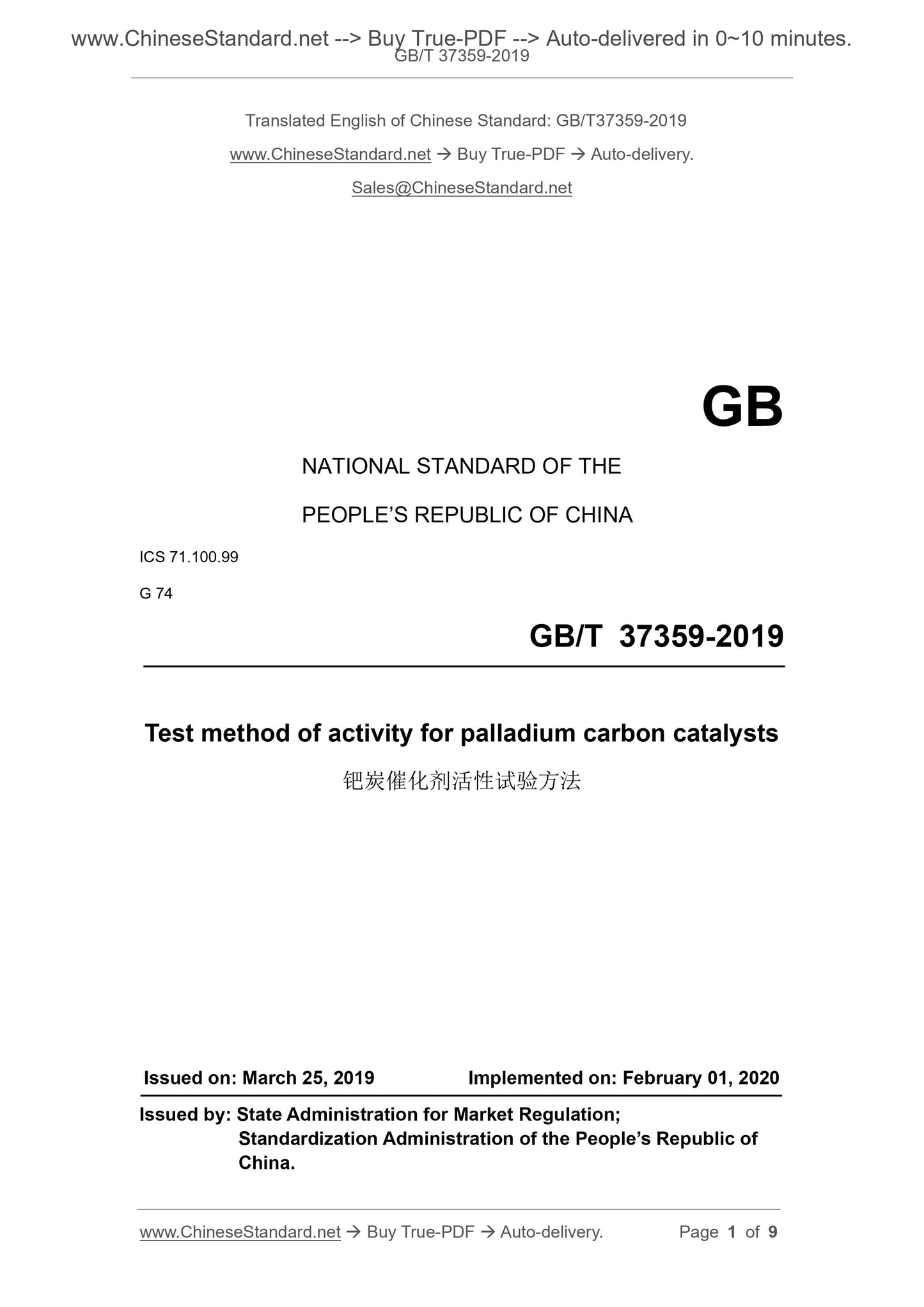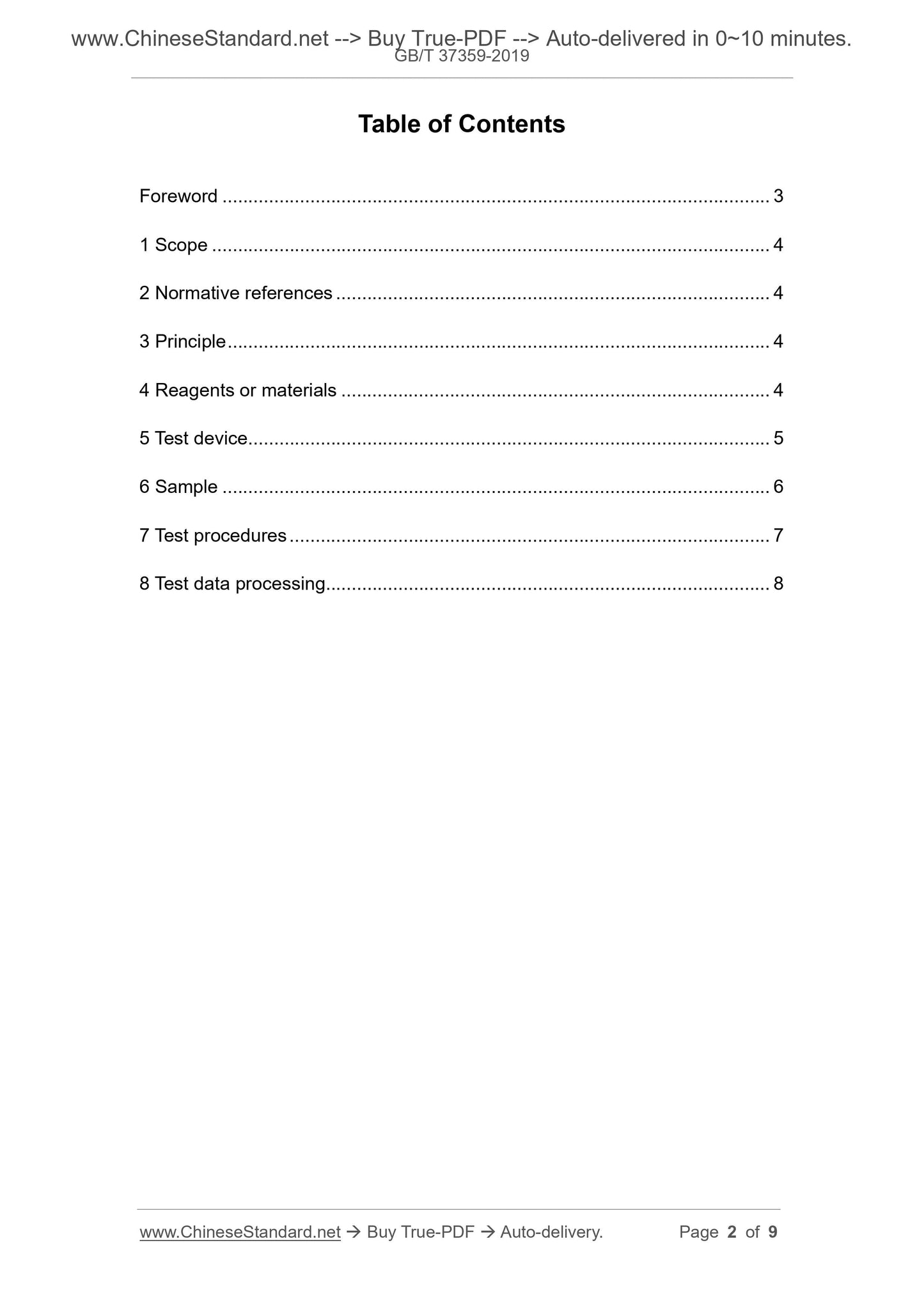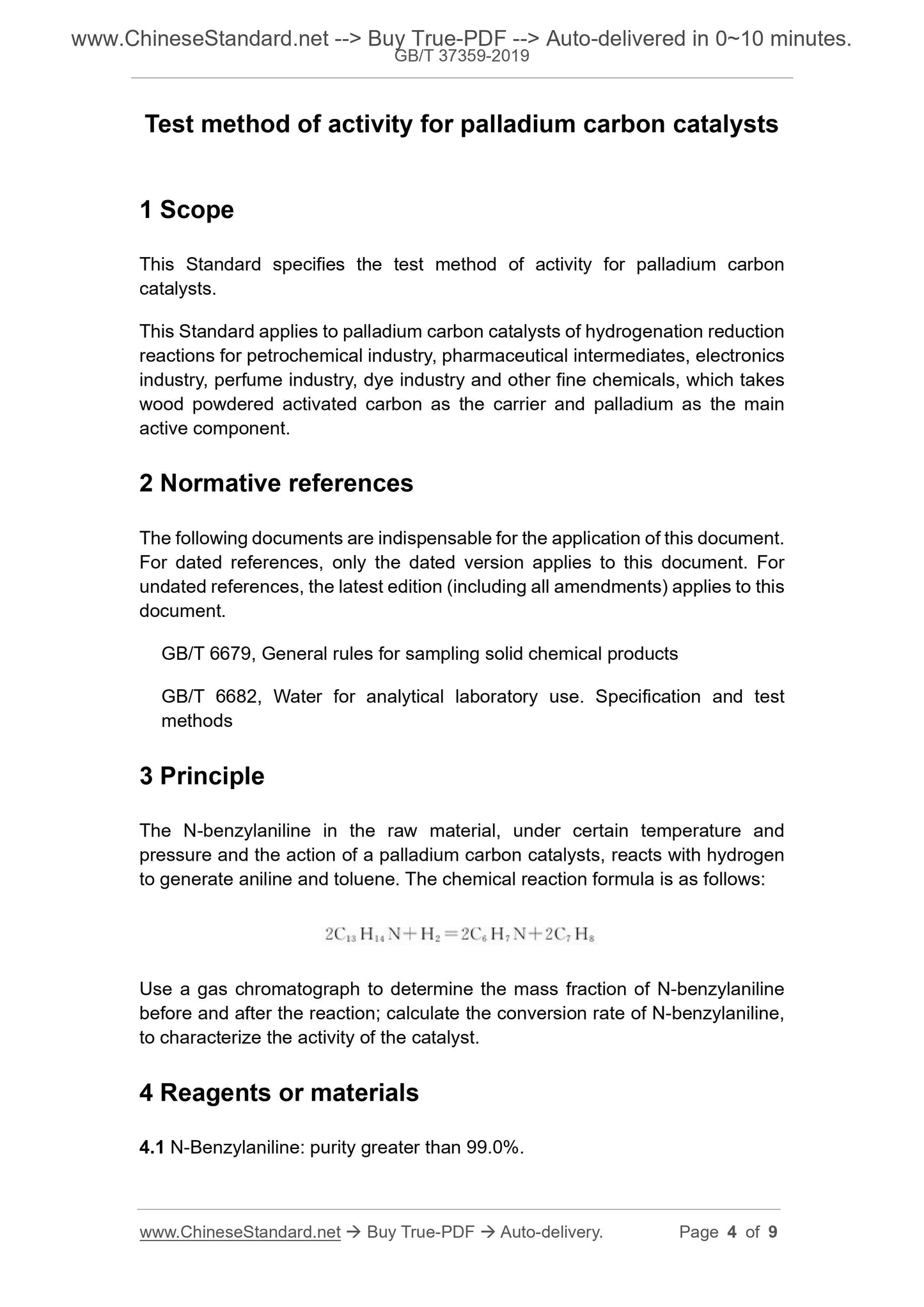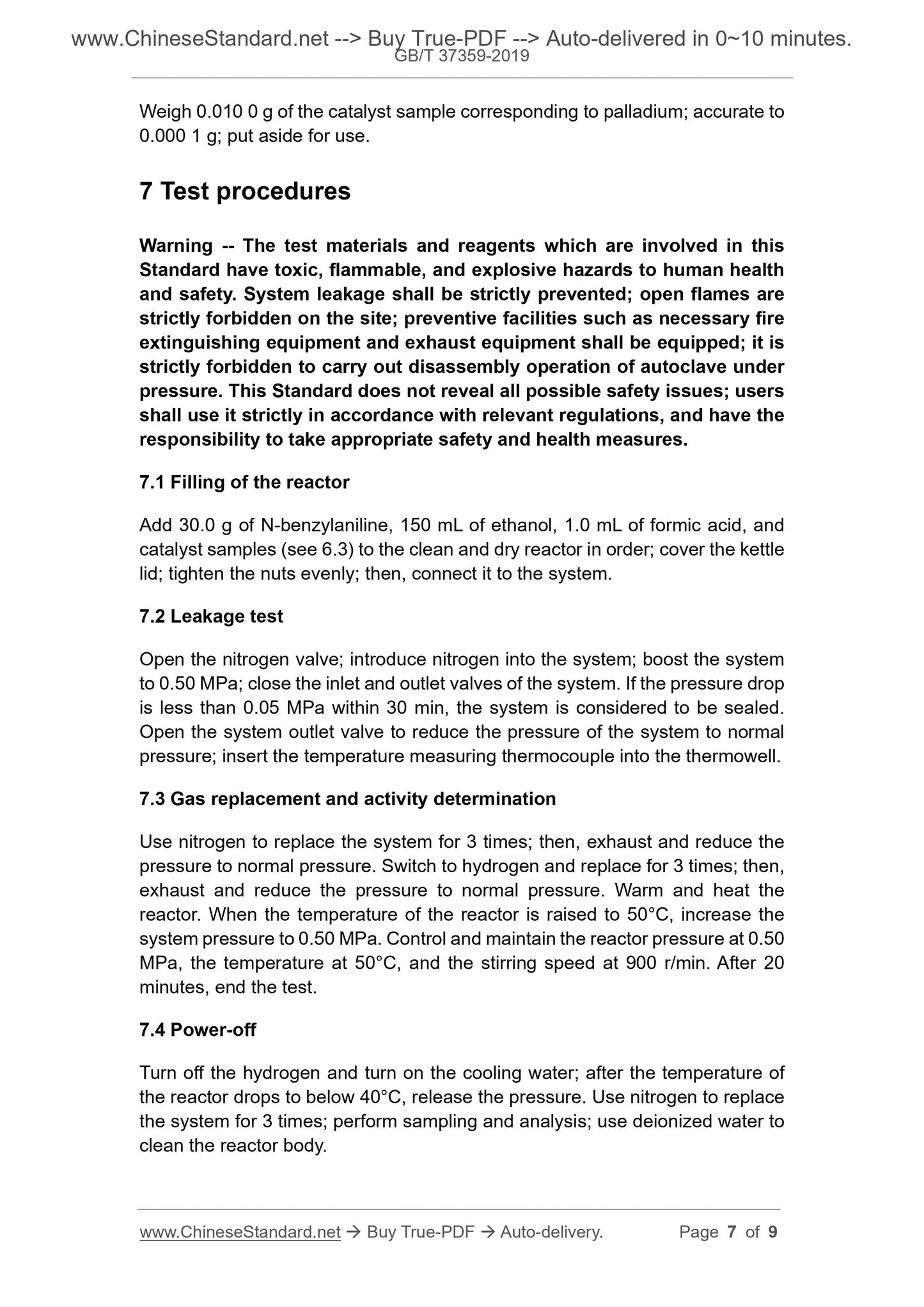1
/
of
4
www.ChineseStandard.us -- Field Test Asia Pte. Ltd.
GB/T 37359-2019 English PDF (GB/T37359-2019)
GB/T 37359-2019 English PDF (GB/T37359-2019)
Regular price
$115.00
Regular price
Sale price
$115.00
Unit price
/
per
Shipping calculated at checkout.
Couldn't load pickup availability
GB/T 37359-2019: Test method of activity for palladium carbon catalysts
Delivery: 9 seconds. Download (and Email) true-PDF + Invoice.Get Quotation: Click GB/T 37359-2019 (Self-service in 1-minute)
Newer / historical versions: GB/T 37359-2019
Preview True-PDF
Scope
This Standard specifies the test method of activity for palladium carboncatalysts.
This Standard applies to palladium carbon catalysts of hydrogenation reduction
reactions for petrochemical industry, pharmaceutical intermediates, electronics
industry, perfume industry, dye industry and other fine chemicals, which takes
wood powdered activated carbon as the carrier and palladium as the main
active component.
Basic Data
| Standard ID | GB/T 37359-2019 (GB/T37359-2019) |
| Description (Translated English) | Test method of activity for palladium carbon catalysts |
| Sector / Industry | National Standard (Recommended) |
| Classification of Chinese Standard | G74 |
| Classification of International Standard | 71.100.99 |
| Word Count Estimation | 6,673 |
| Date of Issue | 2019-03-25 |
| Date of Implementation | 2020-02-01 |
| Issuing agency(ies) | State Administration for Market Regulation, China National Standardization Administration |
Share







